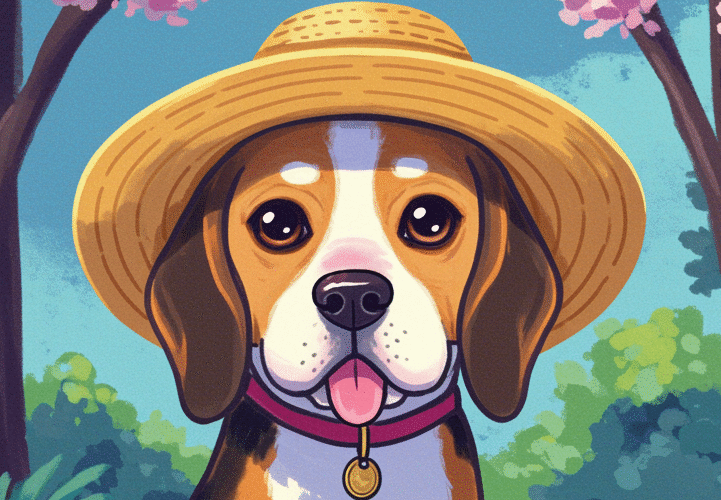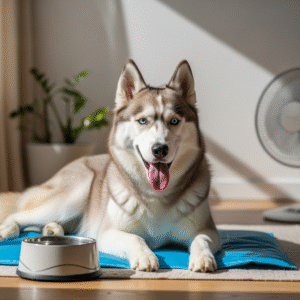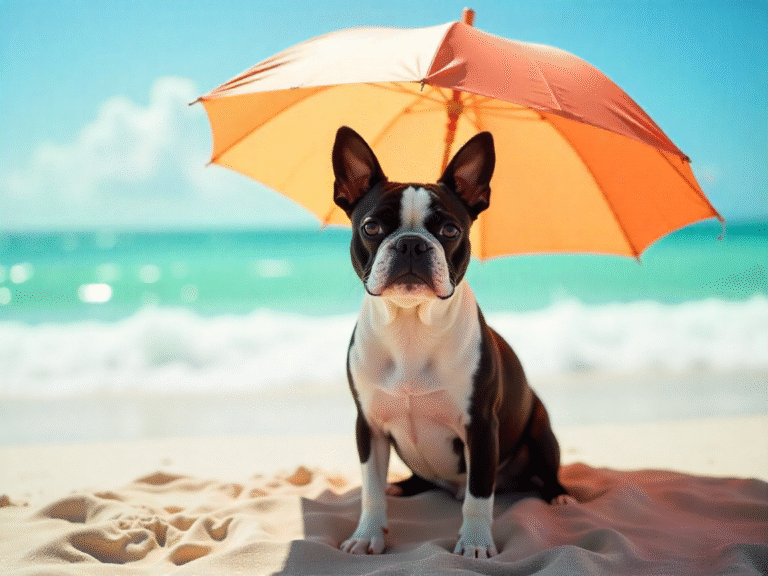Summer heat can be challenging for any dog, but Siberian Huskies face unique struggles with their thick double coat designed for Arctic conditions. If you’re wondering how to keep your husky comfortable when temperatures soar, you’re not alone. Many husky owners worry about their furry friends overheating during the warmer months.
Understanding Why Huskies Struggle with Heat
Before jumping into solutions, it’s important to understand why Siberian Huskies have such difficulty with warm weather. Their ancestors thrived in temperatures as low as -75°F, developing a remarkable double coat system that traps warm air close to their skin. This same adaptation that keeps them warm in freezing conditions becomes a liability when temperatures climb above 70°F.
“Huskies don’t just get warm in summer heat – they can quickly become dangerously overheated. Their thick undercoat acts like a winter parka that they can’t take off, making temperature regulation extremely challenging.”
– Dr. Sarah Mitchell, Veterinary Behaviorist
Unlike humans who cool down through sweating, dogs primarily regulate their body temperature through panting and releasing heat through their paw pads. For huskies, this natural cooling system often isn’t enough when facing hot summer days.
1. Create the Perfect Cool Zone
The foundation of keeping your husky cool starts with providing adequate shade and cool surfaces. Your husky needs access to consistently cool areas throughout the day, both indoors and outdoors.
Indoors, tile or hardwood floors naturally stay cooler than carpeted areas. Many husky owners notice their dogs gravitating toward bathroom tiles or kitchen floors during hot weather. Consider setting up a dedicated cool zone with ceramic tiles or a cooling mat specifically designed for dogs.
For outdoor areas, natural shade from trees works best, but if that’s not available, create artificial shade using tarps or umbrellas. Ensure air circulation in shaded areas – stagnant air can still lead to overheating.
2. Master the Art of Hydration
Proper hydration is absolutely critical for husky heat management. Fresh, cool water should be available at all times, and not just in one location. Place multiple water bowls around your home and yard so your husky always has easy access.
“Adding ice cubes to water bowls isn’t just refreshing – it encourages drinking and helps lower your dog’s core temperature. I recommend checking water bowls every few hours during hot days to ensure they stay cool and clean.”
– Mark Thompson, Professional Dog Trainer
Consider investing in an elevated water bowl or automatic water dispenser that keeps water cooler longer. Some owners find success with frozen treats like ice cubes made from low-sodium chicken broth or frozen Kong toys filled with water.
3. Time Your Exercise Wisely
Exercise timing can make or break your husky’s comfort during summer months. The key is avoiding the hottest parts of the day while still providing the physical activity your energetic husky needs.
Plan walks and playtime for early morning hours, ideally before 8 AM when temperatures are cooler and humidity lower. Evening walks after sunset can also work well, but be sure to test the pavement temperature with your hand first – if it’s too hot for your palm, it’s too hot for your husky’s paws.
During midday heat, focus on mental stimulation instead of physical exercise. Puzzle toys, training sessions, and indoor games can help tire out your husky without the risk of overheating.
4. Invest in Cooling Accessories
Modern pet cooling accessories can provide significant relief for heat-stressed huskies. Cooling mats, vests, and bandanas use various technologies to help lower your dog’s body temperature.
Cooling mats work through gel technology or water circulation, providing a consistently cool surface for your husky to lie on. These are particularly helpful for indoor use and can be moved around as needed.
“Cooling vests can be game-changers for huskies in hot climates. Look for ones that use evaporative cooling rather than gel inserts, as they provide longer-lasting relief and are more comfortable for active dogs.”
– Lisa Rodriguez, Certified Animal Behaviorist
For outdoor adventures, consider protective paw boots designed for hot pavement. These prevent paw pad burns while allowing your husky to enjoy walks even when ground temperatures are elevated.
 5. Use Water as Your Best Friend
5. Use Water as Your Best Friend
Water isn’t just for drinking – it’s one of the most effective tools for active cooling. Many huskies naturally love water, making this strategy both effective and enjoyable.
A kiddie pool in your backyard provides an excellent way for your husky to cool down. Even if your dog doesn’t want to fully submerge, standing in shallow water helps cool their paw pads and belly, where heat exchange is most efficient.
For dogs hesitant about water, try a slow introduction with a shallow pan or use a garden hose to gently wet their paws and belly. Some owners find success with misting systems that provide a fine spray of cool water.
6. Optimize Your Home Environment
Your indoor environment plays a crucial role in your husky’s comfort. Air conditioning is ideal, but if it’s not available, strategic use of fans can help create air circulation and cooling effects.
Close curtains and blinds during the hottest part of the day to prevent sun from heating up your home. Consider using blackout curtains on south-facing windows for maximum heat reduction.
If you have a multi-story home, remember that heat rises. Basements or lower levels naturally stay cooler and can provide relief for your husky during extreme heat.
7. Recognize Warning Signs of Overheating
Even with all preventive measures in place, it’s essential to recognize the early signs of heat exhaustion in your husky. Early detection can prevent a minor issue from becoming a veterinary emergency.
“Watch for excessive panting, drooling, lethargy, and difficulty walking. If your husky’s gums turn bright red or they seem disoriented, get them to a cool area immediately and contact your veterinarian. Heat stroke can be fatal if not treated quickly.”
– Dr. Jennifer Park, Emergency Veterinarian
Other warning signs include vomiting, diarrhea, lack of coordination, and collapse. If you notice any of these symptoms, move your husky to a cool area immediately, offer small amounts of cool water, and contact your veterinarian.
Special Considerations for Senior Huskies
Older huskies may have additional challenges with heat regulation due to underlying health conditions or reduced mobility. Senior dogs often need softer cooling surfaces than hard tile floors, as joint issues can make lying on firm surfaces uncomfortable.
Consider orthopedic cooling mats that provide both temperature relief and joint support. Monitor senior huskies more closely for signs of heat stress, as they may not display obvious symptoms until overheating becomes severe.
Grooming Tips for Summer
While it might seem logical to shave your husky’s coat for summer, this can actually make heat regulation worse. The double coat system works as insulation against both cold and heat when properly maintained.
Instead of shaving, focus on regular brushing to remove loose undercoat and prevent matting. A well-maintained coat allows for better air circulation against the skin. Professional grooming every 6-8 weeks can help keep your husky’s coat in optimal condition for natural temperature regulation.
Creating a Summer Routine
Consistency is key to keeping your husky comfortable throughout the summer months. Establish a routine that includes regular temperature checks, scheduled cooling breaks, and consistent access to fresh water.
Many successful husky owners create a summer checklist that includes checking water bowls, monitoring shade areas, and observing their dog’s behavior for signs of heat stress. This systematic approach helps ensure nothing gets overlooked during busy summer days.
When to Seek Professional Help
While most heat management can be handled at home, certain situations require professional veterinary care. If your husky shows signs of heat exhaustion despite your cooling efforts, or if you notice any breathing difficulties, contact your veterinarian immediately.
Regular veterinary check-ups during summer months can help identify any underlying conditions that might make your husky more susceptible to heat stress. Your vet can also provide personalized advice based on your dog’s specific health needs and your local climate conditions.
Conclusion
Keeping your Siberian Husky cool during summer requires planning, vigilance, and the right tools, but it’s absolutely achievable. By understanding your dog’s unique needs, creating appropriate environments, and staying alert to warning signs, you can ensure your husky stays comfortable and safe throughout the hottest months.
Remember that every husky is different, and what works for one dog might need adjustment for another. Pay attention to your dog’s individual preferences and responses to different cooling methods. With patience and consistency, you and your husky can enjoy many happy, comfortable summers together.
The key is preparation and prevention rather than reaction. Start implementing these strategies before the heat becomes unbearable, and your husky will thank you with continued health, happiness, and that characteristic husky smile we all love so much.


 5. Use Water as Your Best Friend
5. Use Water as Your Best Friend

